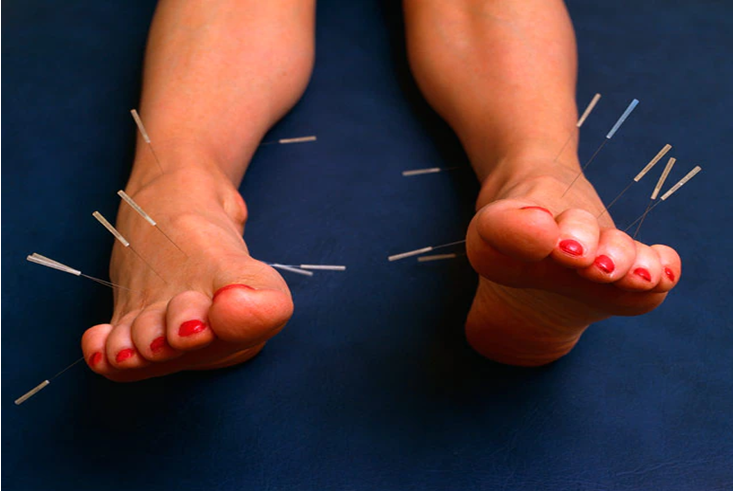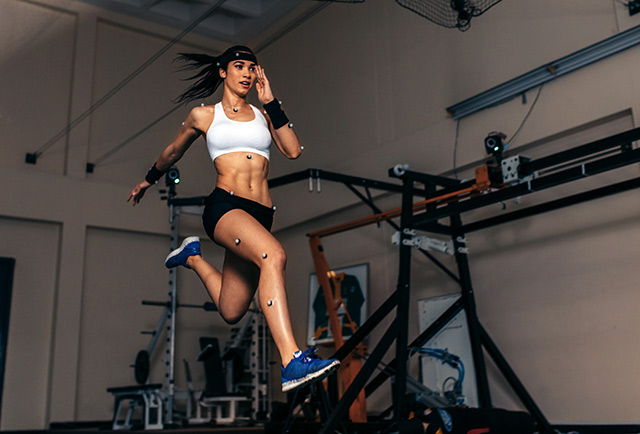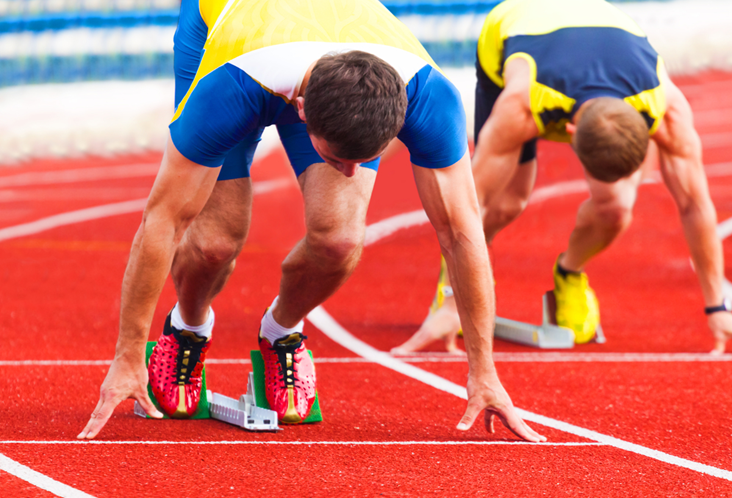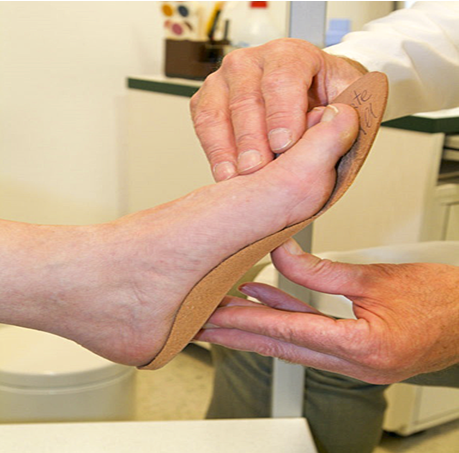
BIOMECHANICAL ASSESSMENT OF THE FOOT & ANKLE JOINT
AN OVERVIEW OF BIOMECHANICAL ASSESSMENT OF THE FOOT & ANKLE JOINT: THE IMPORTANCE OF PODIATRY IN SPORTS PERFORMANCE AND WHY PODIATRY CAN HELP SYMPTOM RELIEF.
The increase in the practice of running has generated a type of public that loves the sport, but which in turn is more aware of the need to take preventive measures. Biomechanical studies of the footprint and personalised insoles are increasingly in demand in a sector that enjoys sport while thinking about minimising risks. Furthermore, it has been shown that lower limbs injuries represent nearly 70% of all sports-related injuries (G M Gordon 1984).
What are biomechanics? This concept is very familiar within the field of podiatry, but outside of it is usually a term that few people recognize. At MY Sports Injury Clinic in Manchester, we know this discipline very well, as it is a common practice that is carried out by our sports physio Manchester to generate different diagnoses and be able to apply personalised treatments to each patient.
Biomechanics can be defined as the discipline in charge of analysing the movement of the body in different situations and how it can react (Jay Levrio 2009). For instance, the knees, hips, feet, and ankles are parts that are activated when walking, jogging or running; therefore, it is crucial to know how they respond to this stimulus, so that they are not negatively affected.

At our Sports Therapy Manchester Clinic, we offer a comprehensive treatment for athletes. Our sports massage Manchester practitioners who are specialists in sports podiatry, take care of the tread of all types of athletes, attending to the particular needs of each sport, category, and patient.
Foot care should be present throughout our lives, and in the particular case of sports people more. For an athlete, foot care is essential, since it is a gesture that is going to be performed thousands of times and more repeatedly than a person who does not practice any sport.
Let us remember that if the footprint is not adequate, it not only affects our feet, but our entire body, especially the ankle, knee, hip and back joints, producing pathologies at the muscular and postural level. Therefore, if we take care of our footprint, we can enjoy sport throughout life in a healthy way.
The basis of the study in sports podiatry is the prevention of injuries and improvement of sports performance.
If you are looking for sports podiatry in Manchester City Centre to prevent, diagnose and treat lower limb conditions related to the feet, you have come to the perfect place! At MY Sports Injury Clinic we are experts in musculoskeletal joint disorders, sports podiatry and we work at all levels of sports performance within our private practice. We help professional athletes and those who make sports a lifestyle to feel better. Other proven medical treatments which we provide are, Sports Massage, Sports Chiropractic, Acupuncture, Sports physiotherapy & Foot Podiatry in Manchester in Manchester. Most common services include Sports Physical therapy & Manual Therapy. In order to get an initial appointment, visit: https://www.mysportsinjury.co.uk/booking.

WHAT IS THE RELATIONSHIP BETWEEN BIOMECHANICS AND PODIATRY?
Keep in mind that the feet are the base of the entire body, the ones that support all the weight when we are in a static or dynamic vertical position. With the step by step the whole body is involved, so it is important that all people have a complete study of the footprint to detect possible biomechanical alterations.
It is important to know what response the body gives to the movement we cause, as it is one of the best ways to prevent diseases and ailments, such as plantar fasciitis, claw toes, knee or hip problems. To do this, physio Manchester professionals analyse the behaviour of the entire locomotor system and apply this information to the prevention of alterations that originate in the feet.

It should be noted that the health of the feet is the health of the body. This is because they are the great leaders of the movement and their work is much harder than it seems; therefore, they need to receive the attention they deserve, because by solving foot problems, other parts of the body can be restored to health (Leonard A Levy 2015).
WHAT ARE THE MOST FREQUENT SPORT INJURIES TO TREAT WITH SPORTS PODIATRY AT OUR SPORTS THERAPY MANCHESTER CLINIC?
Sports podiatry is responsible for diagnosing and treating sports injuries that can be suffered during the performance of any sporting activity. However, it is very convenient to also remember the importance of its preventive nature. Right now, thanks to technological advances, it is possible to obtain much more precise information about the foot.
In this way, we can choose good shoes that meet the characteristics we need for our feet, as well as tailor-made insoles for each person.
Whether we are cautious or not, playing sports can lead to muscle and joint injuries, especially when practicing sports at a professional level. In sports podiatry there are injuries common to all sports and others more specific depending on the activity performed by each person.
One of the most widespread injuries are ankle sprains alongside with Achilles tendinitis.
HOW EFFECTIVE ARE ORTHOTICS DEVICES FOR TREATING ACHILLERS TENDINOPATHY?
One of the reasons people visit our Sports Massage Manchester Clinic is to seeking out resolution for their feet issues so some of the proven orthotics devices used for Achilles Tendinopathy are splints, braces, foot orthoses, etc. Moderate evidence was found in these studies which showed that using these orthotics devices alongside physical therapy can produce beneficial outcomes (Lisa A Scott et la, 2015).
Another very common injury is plantar fasciitis, which causes acute pain in the inner area of the heel and usually manifests itself when we put our foot down in the morning when we get up.
Another common injury that causes muscle pain in the leg or shin is shin splints. Blisters and stress fractures are other common injuries that we treat in sports injury clinic. As soon as the first symptoms appear, it is important to go to a specialised podiatrist, in this way we will prevent the problem from getting worse.
HOW CAN BIOMECHANICS IN PODIATRY HELP IMPROVE ATHLETES’ PERFORMANCE?
Biomechanics in podiatry is used to study support, gait, and, in the case of being an athlete, what is called sports gesture as well. Sports biomechanics is perhaps one of the most demanded disciplines by sports clubs. This is due to the fact that athletes are increasingly aware of the importance of taking care of their feet, both to prevent possible injuries and to increase their performance.

It is better to anticipate the pain and not take the risk. Thanks to these studies, professionals create personalised routines, 100% adapted to the athlete.
IS BIOMECHANICAL ASSESSMENT OF ANKLE AND FOOT FOR ELITE ATHLETES ONLY?
Biomechanics can be applied not only to athletes, but also to every person, since we all walk and move to perform different actions such as go to the park, running, etc.
HOW DOES THE FOOT AFFECT THE POSTURE?
The influence of the foot on the posture of the body is important. Posture is defined as each of the positions adopted by the body in spatial relation between the different parts or segments that comprise it.
“Efficient posture” is understood as that which requires the minimum energy expenditure. This posture arises from the correct joint alignment of each of the body segments, and as a consequence produces an absence of muscle fatigue and the accumulation of residual tension, which are the origin of pain and a sensation of bodily discomfort.
In this way, the morphological structure of the foot influences the general structure of the organism, considering, in addition, that the plantar support conditions the alignment of the spine (Andrew K Buldt et la, 2018).
WHY DO WE NEED FOOT ALINGMENT?
Inappropriate footwear and incorrect foot alignment can lead to a varied list of physical problems, such as calf strain, ligament rupture, lower back pain and sprains, amongst others.
The quality of life can be improved by a good way of stepping. To solve it, podiatry and biomechanics have joined technological innovation for the diagnosis, design and manufacture of personalised insoles (Sigvard T Hansen Jr et la, 2009).
PODIATRY OR ORTHOTICS? WHICH ONE TO CHOOSE?
We have discussed orthotics and podiatry are two different types of medical disciplines that treat pathologies, injuries or ailments located in different parts of the body, which in both cases do involve the bone, nervous and muscular systems.
WHAT IS THE DIFFRENCE BETWEEN ORTHOTICS AND PODIATRY?
Basically, the main difference is that the podiatrist is in charge of providing an accurate diagnosis and subsequently treating foot problems such as malformations, deformities, traumas, amongst others. Therefore, a podiatrist may prescribe orthotics.
On the other hand, orthotics has got some likenesses with podiatry owing to the fact that they can work jointly. Meanwhile at our sports podiatry clinic in Manchester you will be told that orthotics consists of studying and analysing the musculoskeletal system as a whole so the bones, muscles, and joint issues can be solved by prescribing orthotic devices in some cases.

HOW BENEFICIAL IS PODIATRY TREATMENT ALONGSIDE PHYSIOTHERAPY TREATMENT IN MY SPORTS THERAPY CLINIC?
If physiotherapy deals with the treatment and prevention of musculoskeletal pathologies of the entire human body, podiatry does the same for the foot and lower limbs.
Although the answer is clear, there are many variations that we can give it, and in this takeaway, we will discuss it.
Physiotherapy is responsible for the treatment of many pathologies of the lower body, likewise the podiatrist influences these ailments.
In the same way, the complete podiatric assessment provides a lot of information on how the muscles work in each phase of walking. With this information we can treat those who have hypertonia or send empowerment exercises for those who are working little.
On the other hand, ultrasound examination by a foot physio in Manchester can help podiatric treatment. Knowing how the plantar fascia is, the preparation of the foot orthotics will be much more precise and in the case of needing to infiltrate the affected area, the location will be exact.
In this way, interprofessional action enriches the treatment and the patient’s improvement is greater.
References
Gordon GM. Podiatric sports medicine. Evaluation and prevention of injuries. Clin Podiatry. 1984 Aug;1(2):401-16. PMID: 6152607.
Levrio J. Podiatric medicine: a current assessment. J Am Podiatr Med Assoc. 2009 Jan-Feb;99(1):65-72. doi: 10.7547/0980065. PMID: 19141726.
Levy LA. The role of podiatric medicine in the health-care team. A paradigm shift. J Am Podiatr Med Assoc. 2015 Mar;105(2):198-9. doi: 10.7547/0003-0538-105.2.198. PMID: 25815663.
Scott LA, Munteanu SE, Menz HB. Effectiveness of orthotic devices in the treatment of Achilles tendinopathy: a systematic review. Sports Med. 2015 Jan;45(1):95-110. doi: 10.1007/s40279-014-0237-z. PMID: 25108348.
Buldt AK, Allan JJ, Landorf KB, Menz HB. The relationship between foot posture and plantar pressure during walking in adults: A systematic review. Gait Posture. 2018 May;62:56-67. doi: 10.1016/j.gaitpost.2018.02.026. Epub 2018 Feb 23. PMID: 29524798.
Hansen ST Jr. Introduction: The first metatarsal: it’s importance in the human foot. Clin Podiatr Med Surg. 2009 Jul;26(3):351-4, Table of Contents. doi: 10.1016/j.cpm.2009.03.012. PMID: 19505636.

